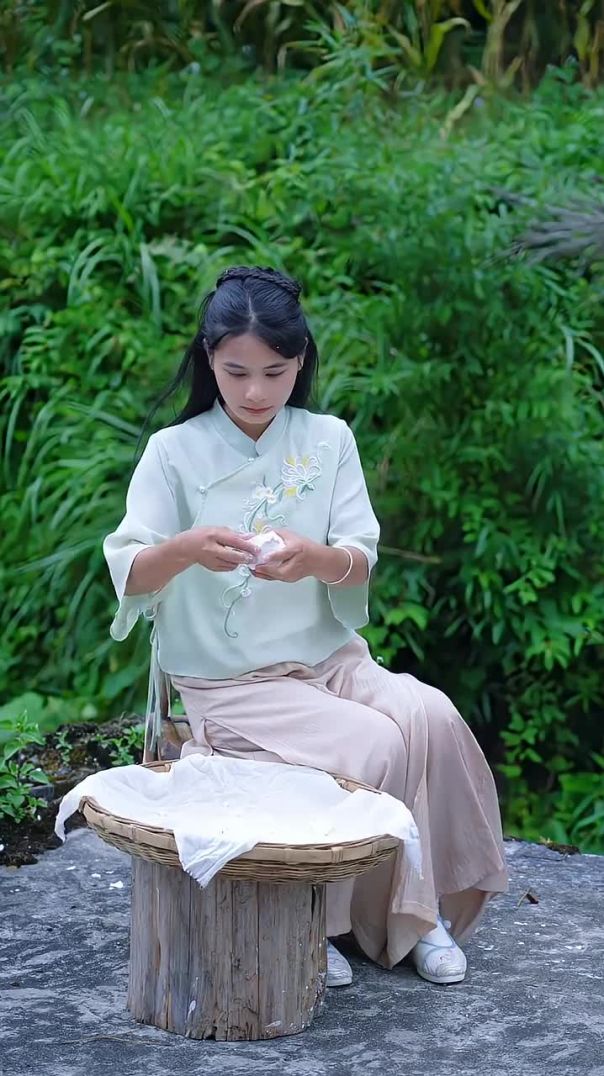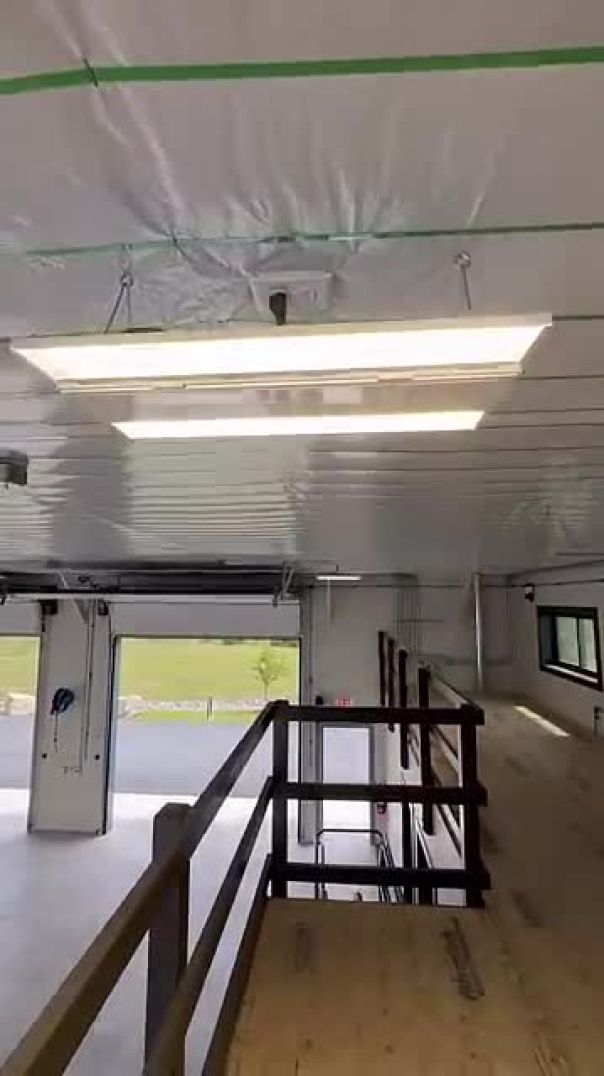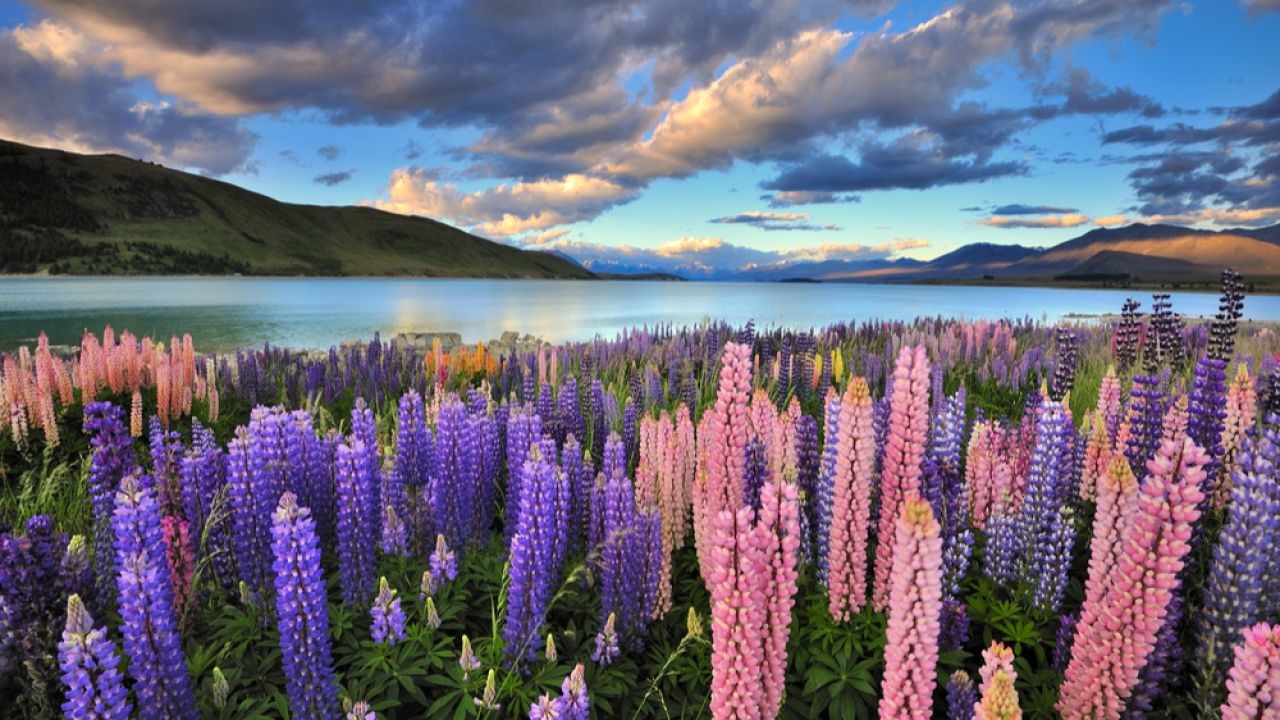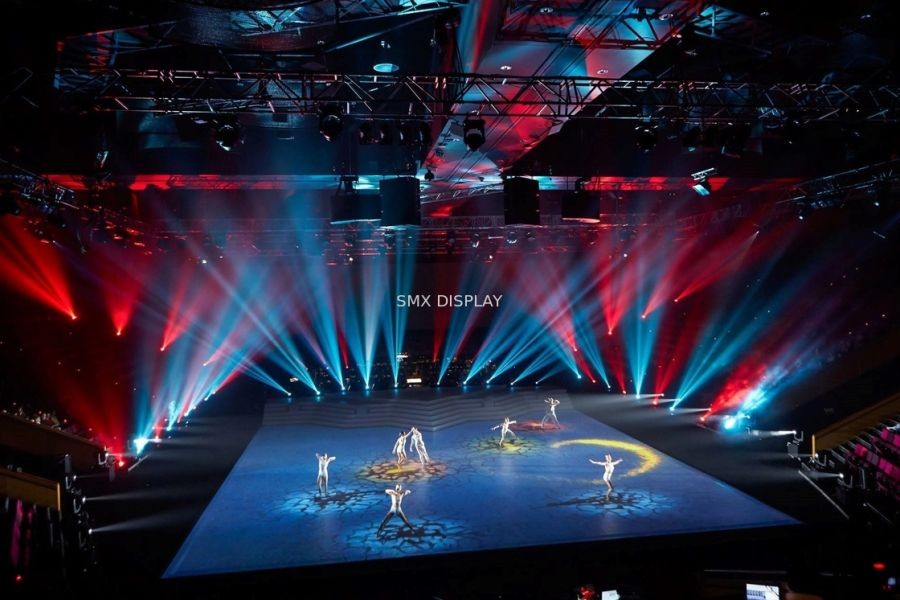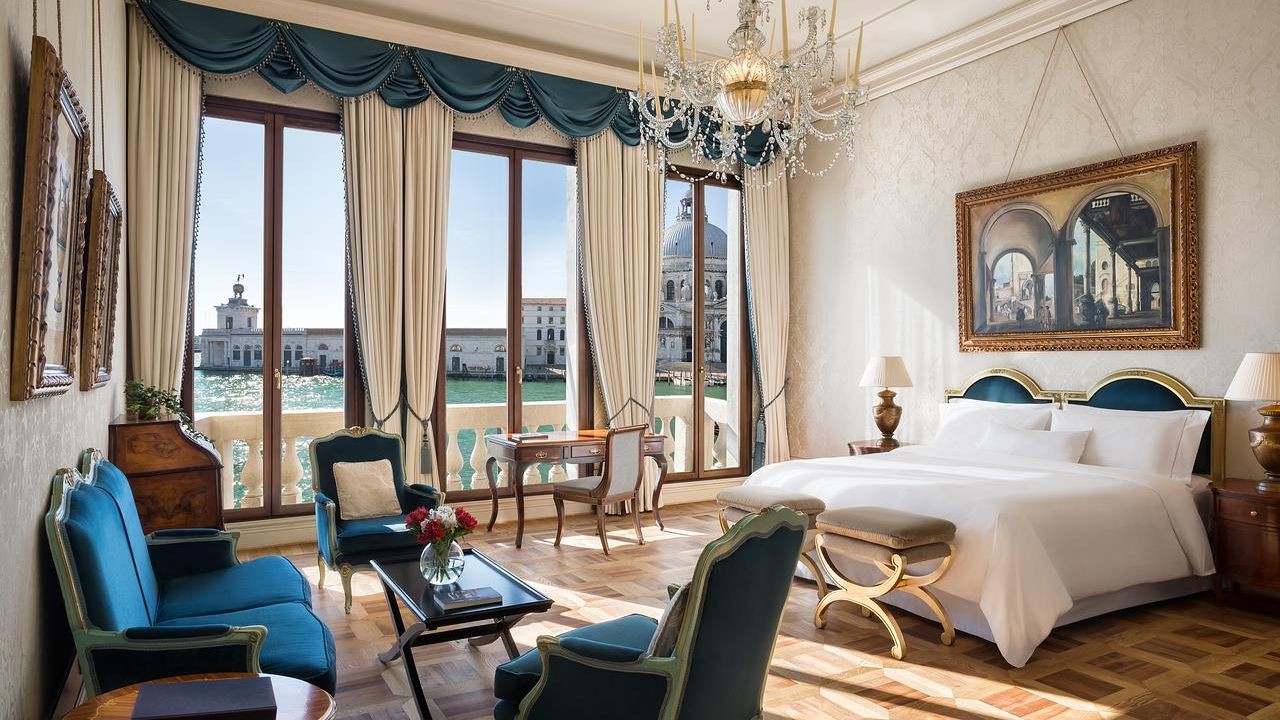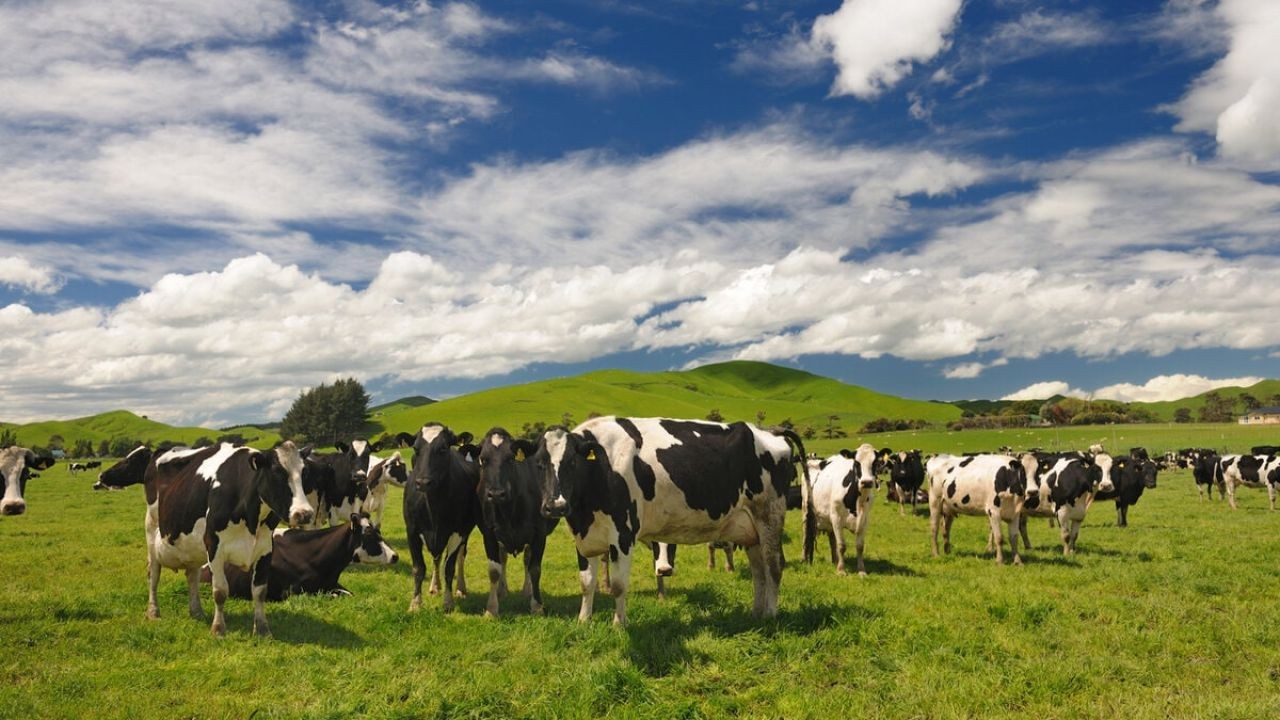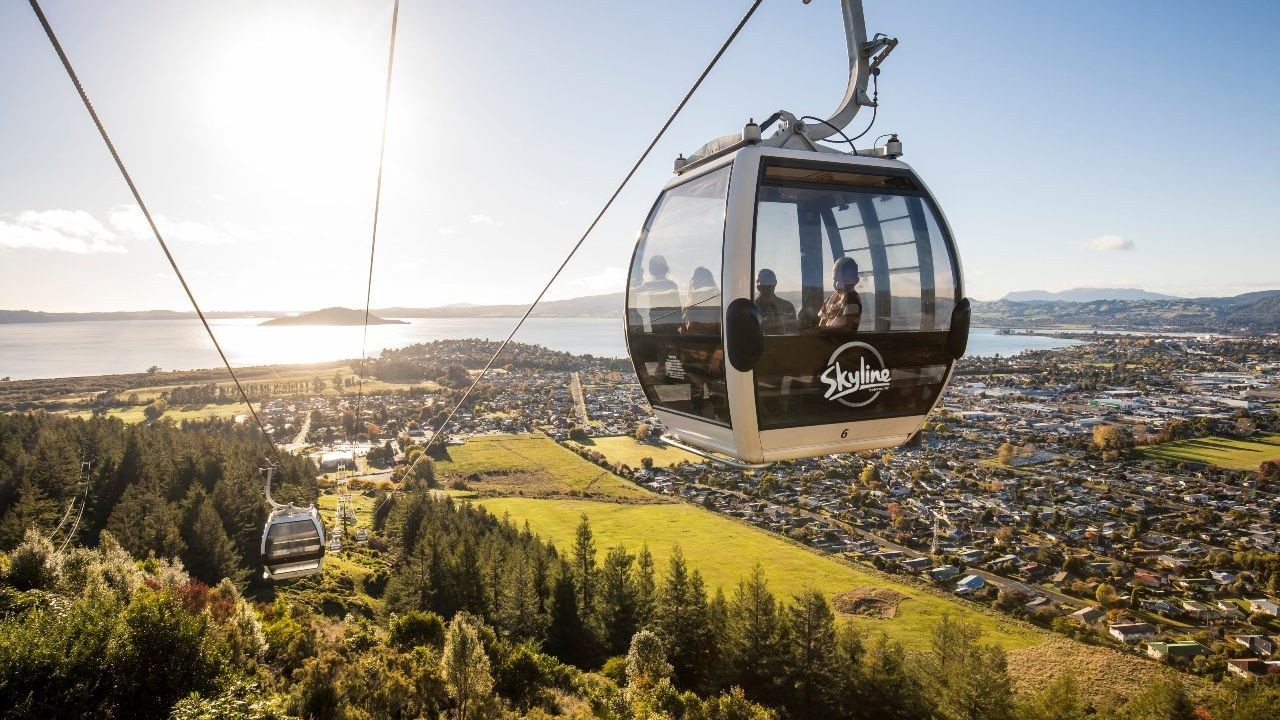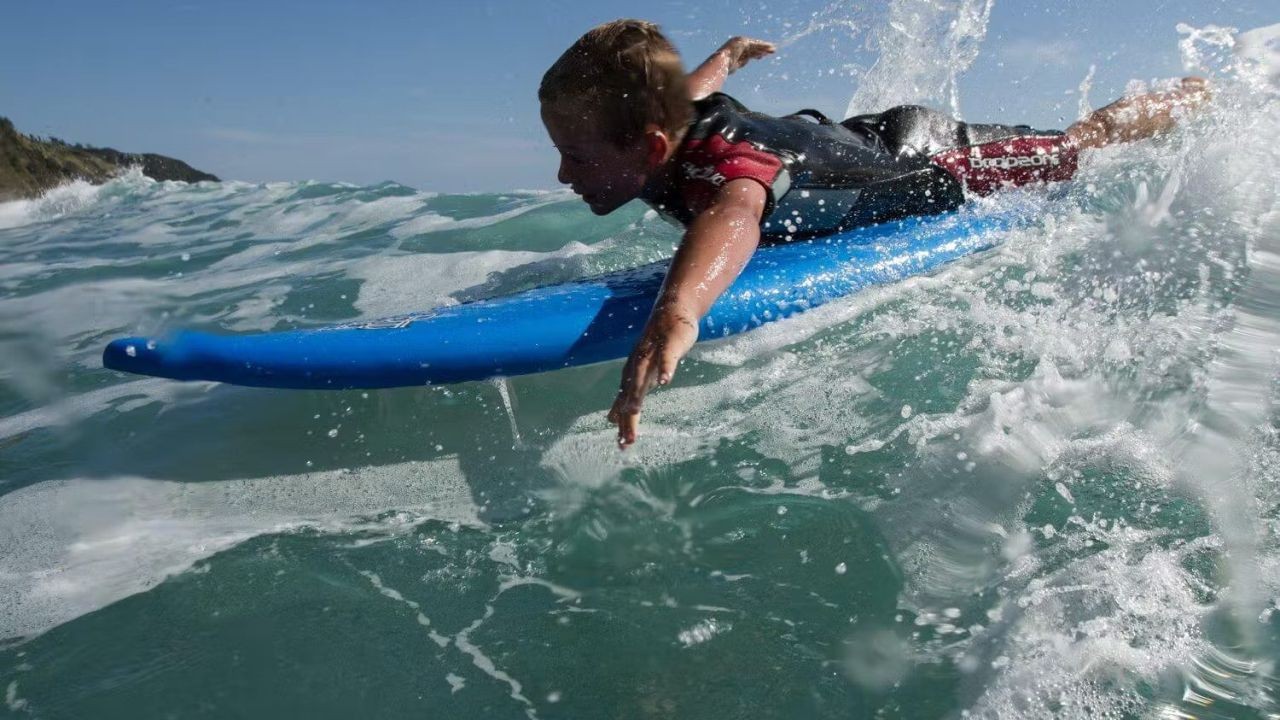New Zealand is a land rich with stories — from the ancient traditions of the Māori people to the tales of European settlers and beyond. Exploring the country’s cultural and heritage sites offers a fascinating window into its diverse identity, traditions, and history. Whether you’re a history buff, culture seeker, or traveller, these top 10 sites reveal the heart and soul of Aotearoa (New Zealand).
Waitangi Treaty Grounds: The Birthplace of Modern New Zealand
Discover the Waitangi Treaty Grounds in the Bay of Islands — New Zealand’s most important historic site where the nation’s founding treaty was signed. Explore Māori culture, heritage, and stunning grounds.
The Waitangi Treaty Grounds is arguably the most significant historic and cultural site in New Zealand. Located in the scenic Bay of Islands, it marks the spot where, on February 6, 1840, Māori chiefs and representatives of the British Crown signed the Treaty of Waitangi — the founding document of modern New Zealand. Today, the grounds serve as a living museum, cultural hub, and place of remembrance where visitors can gain deep insights into New Zealand’s bicultural heritage and the ongoing journey of partnership between Māori and Pākehā (non-Māori New Zealanders).
History and Significance
The Treaty of Waitangi was drafted to establish governance while protecting Māori rights and property. However, its interpretation and implementation have been the source of extensive debate, making Waitangi a symbol of both unity and contention. The grounds themselves include several important historical landmarks:
Waitangi Treaty House: The original home of the British Resident, James Busby, where the treaty was signed.
Te Whare Rūnanga: A stunning carved Māori meeting house representing tribal unity and culture.
Te Kōngahu Museum of Waitangi: Opened in 2017, this award-winning museum hosts exhibitions that explain the treaty’s history and its continuing impact.
Carvings and Statues: Representing important Māori ancestors and events.
Cultural Experiences at Waitangi
Visitors to the Waitangi Treaty Grounds can participate in a variety of cultural experiences designed to educate and inspire:
Māori Cultural Performances: Traditional haka dances, waiata (songs), and storytelling bring Māori history and values to life.
Guided Tours: Knowledgeable guides provide deep insights into the treaty’s significance, the people who signed it, and the complex history that followed.
Hands-on Workshops: Learn about traditional Māori crafts like carving, weaving, and flax preparation.
Waitangi Day Celebrations: Every year on February 6th, Waitangi becomes a focal point for national commemorations, speeches, and performances.
Why Visit the Waitangi Treaty Grounds?
Understand New Zealand’s Origins: Gain firsthand knowledge of how New Zealand’s bicultural foundation was laid.
Experience Living Māori Culture: See, hear, and participate in authentic Māori traditions.
Explore Stunning Grounds: The scenic location on the Bay of Islands features lush gardens, a historic waka (canoe), and waterfront views.
Educational for All Ages: The site offers activities and exhibits accessible for families, school groups, and solo travelers alike.
Practical Information
Location: Waitangi, Bay of Islands, Northland, New Zealand. Approximately 3 hours’ drive north of Auckland.
Opening Hours: Generally 9 AM to 5 PM daily (check official website for updates).
Tickets: Entry fees apply; guided tours and cultural performances often included or available separately.
Accessibility: The site offers good wheelchair access but check specifics for guided tours.
🎯 Key Takeaways
Waitangi Treaty Grounds is the foundational site of New Zealand’s nationhood.
It offers a unique blend of history, culture, and natural beauty.
Māori cultural experiences are immersive and informative.
The Treaty remains a living, evolving agreement shaping NZ’s future.
Visiting enriches understanding of bicultural partnership and shared history.
🧐 Myths & Misconceptions
Myth: “The Treaty of Waitangi was a simple, peaceful agreement.”
Fact: The treaty’s signing was complex, with differing interpretations leading to decades of dispute and settlement processes.Myth: “Waitangi is only important for Māori.”
Fact: Waitangi Treaty Grounds is a site of national significance, important for all New Zealanders and visitors wanting to understand the country’s heritage.
⚠️ Avoid These Mistakes When Visiting
Don’t rush your visit — allow time to attend cultural performances and explore the museum fully.
Avoid visiting only on Waitangi Day if you want a quieter, more reflective experience.
Don’t treat the site as just a tourist attraction; approach with respect for its ongoing cultural and political importance.
Plan transport and accommodation in advance, especially during peak seasons.
🚀 Call to Action: Share Your Waitangi Experience on Vidude.com!
Have you visited the Waitangi Treaty Grounds? Capture your journey, cultural performances, and reflections on Vidude.com, New Zealand’s premier video platform for authentic Kiwi stories.
👉 Upload your Waitangi Treaty Grounds videos now, and join a community passionate about preserving and sharing New Zealand’s living heritage!
Te Papa Tongarewa Museum: New Zealand’s Iconic National Museum
Discover Te Papa Tongarewa in Wellington — New Zealand’s national museum showcasing Māori culture, natural history, art, and innovation. A must-visit interactive experience for all ages.
Located on Wellington’s vibrant waterfront, Te Papa Tongarewa stands as New Zealand’s premier museum and cultural institution. Known simply as Te Papa (“Our Place” in Māori), it offers visitors an extraordinary journey through the nation’s history, environment, art, and living cultures. Unlike traditional museums, Te Papa is renowned for its interactive exhibits, cutting-edge technology, and strong bicultural focus, making it an essential destination for locals and tourists alike.
The Meaning Behind Te Papa Tongarewa
The museum’s full name, Te Papa Tongarewa, roughly translates to “container of treasures,” symbolizing its role as the guardian of Aotearoa’s priceless cultural, historical, and natural heritage. The museum was established in 1998 by merging several Wellington institutions to create a modern space that reflects New Zealand’s diverse stories.
What You Can Explore at Te Papa
Māori and Pacific Cultures
One of the museum’s core strengths is its dedication to Māori and Pacific Island heritage. Visitors can admire taonga Māori (treasures) such as intricately carved meeting house panels, historic weapons, and woven cloaks. Interactive displays delve into Māori cosmology, language, and traditions, often narrated by Māori voices.
Natural History and Biodiversity
Te Papa houses impressive collections of New Zealand’s unique flora and fauna, from giant squid specimens to native birdlife and fossils. Its immersive nature zones showcase the country’s geological activity, including volcanoes and earthquakes, helping visitors understand Aotearoa’s dynamic environment.
Contemporary Art and Exhibitions
Te Papa hosts a rotating calendar of art exhibitions, featuring contemporary New Zealand and international artists. Its collection spans paintings, sculptures, multimedia, and performance art, providing insights into evolving Kiwi identities and creative expressions.
Special Exhibitions & Events
The museum regularly features blockbuster exhibitions, educational workshops, and public talks. Highlights have included international exhibits like Māori tattoo (Ta Moko) displays and interactive science shows.
Why Visit Te Papa?
Interactive and Family-Friendly: Hands-on exhibits and kid-friendly zones make it a fun, educational visit for all ages.
Bicultural Approach: The museum respectfully balances Māori and Pākehā narratives, encouraging understanding and dialogue.
Free Entry: General admission is free, making it accessible to everyone.
Central Location: Situated in Wellington’s city center, it’s easy to combine with other sightseeing.
Practical Information
Location: 55 Cable Street, Wellington Waterfront, New Zealand.
Opening Hours: Typically 10 AM to 6 PM daily; check the official website for special closures.
Entry: Free for permanent exhibitions; special exhibitions may require tickets.
Accessibility: Fully wheelchair accessible, with services for hearing and vision-impaired visitors.
🎯 Key Takeaways
Te Papa is New Zealand’s flagship museum reflecting its bicultural identity.
It offers engaging, interactive exhibits suitable for all ages.
The museum’s commitment to Māori culture makes it unique globally.
Located in Wellington, it’s a central cultural hub for visitors and locals alike.
🧐 Myths & Misconceptions
Myth: “Museums are boring and outdated.”
Fact: Te Papa’s innovative use of technology and storytelling ensures a dynamic, immersive experience.Myth: “Te Papa only focuses on Māori culture.”
Fact: While Māori culture is central, the museum also covers natural history, art, and contemporary New Zealand life.
⚠️ Avoid These Common Mistakes
Don’t rush your visit — Te Papa is large with many exhibits worth exploring fully.
Avoid visiting only on weekends when it can get crowded, especially with families.
Don’t skip the guided tours or audio guides for richer context.
Plan for at least 2-3 hours to experience the museum comfortably.
🚀 Call to Action: Share Your Te Papa Moments on Vidude.com!
Have you explored Te Papa Tongarewa? Share your favourite exhibits, family adventures, or cultural insights on Vidude.com — New Zealand’s top video platform celebrating Kiwi stories.
👉 Upload your Te Papa experiences now and join a community passionate about New Zealand’s living heritage and culture!
Tamaki Māori Village: An Authentic Māori Cultural Experience in Rotorua
Experience the magic of Māori culture at Tamaki Māori Village in Rotorua. Enjoy traditional performances, hangi feasts, and immersive storytelling in an authentic village setting.
Nestled in the geothermal wonderland of Rotorua, the Tamaki Māori Village offers visitors a captivating journey into the heart of Māori culture. Unlike typical tourist attractions, Tamaki provides an immersive, authentic experience that showcases the customs, history, and hospitality of the Māori people through powerful storytelling, traditional performances, and delicious cuisine. It’s a must-visit destination for anyone seeking to understand and celebrate New Zealand’s indigenous heritage in a truly unforgettable way.
The Authentic Village Experience
Tamaki Māori Village is a living cultural village built on ancestral land, where visitors step back in time to witness the daily life and traditions of a Māori tribe (iwi). The experience begins with a traditional pōwhiri (welcome ceremony), setting the tone for the evening with spiritual and cultural significance.
What to Expect at Tamaki Māori Village
Traditional Performances
Guests are treated to spectacular performances including:
Kapa Haka: Energetic group dances, haka war chants, and waiata songs performed with passion and precision.
Poi Dancing: Graceful, rhythmic movements with poi balls that tell stories through dance.
Weapon Demonstrations: Displays of ancient Māori weaponry and combat techniques.
Hangi Feast
A highlight of the visit is the traditional hangi — food slow-cooked in an earth oven. The hangi feast features succulent meats, vegetables, and root crops infused with smoky, earthy flavors, served in a communal setting that emphasizes Māori hospitality (manaakitanga).
Storytelling and History
Throughout the evening, skilled storytellers share legends, tribal histories, and insights into Māori beliefs, spirituality, and connection to the land (whenua). This narrative deepens the cultural appreciation of guests beyond the performances.
Village Tour
Explore the replica village with traditional meeting houses, carvings, and communal spaces that vividly recreate the environment of a historic Māori settlement.
Why Visit Tamaki Māori Village?
Authenticity: Experience Māori culture as it was traditionally lived, not a staged show.
Engagement: Interactive and intimate, allowing guests to ask questions and connect with performers.
Location: Set amidst Rotorua’s geothermal landscape, combining natural wonder with cultural richness.
Family Friendly: Suitable for all ages with accessible facilities.
Practical Information
Location: 1235 Hinemaru Street, Rotorua, New Zealand.
Opening Hours: Evening shows daily; booking recommended in advance.
Tickets: Includes cultural performance and hangi dinner; special packages available.
Accessibility: The village offers reasonable wheelchair access; confirm details when booking.
🎯 Key Takeaways
Tamaki Māori Village provides an immersive, authentic Māori cultural experience.
Evening includes traditional pōwhiri, kapa haka, poi dancing, and a hangi feast.
The village is built on ancestral land with strong spiritual significance.
It’s a top cultural attraction in Rotorua, ideal for visitors wanting genuine connection.
🧐 Myths & Misconceptions
Myth: “Māori cultural experiences are just performances.”
Fact: Tamaki focuses on authenticity and cultural education, not just entertainment.Myth: “Hangi is just another type of barbecue.”
Fact: Hangi is a sacred cooking method rooted in tradition and communal values.
⚠️ Avoid These Common Mistakes
Don’t book last minute — shows sell out quickly, especially in peak tourist season.
Avoid late arrivals; the experience begins with a formal pōwhiri ceremony.
Don’t miss asking questions during the interactive sessions for deeper understanding.
Avoid skipping the hangi feast — it’s a fundamental part of the cultural immersion.
🚀 Call to Action: Share Your Tamaki Māori Village Adventure on Vidude.com!
Have you experienced the magic of Tamaki Māori Village? Capture your cultural journey, performances, and reflections on Vidude.com, New Zealand’s leading video platform celebrating authentic Kiwi stories.
👉 Upload your Tamaki Māori Village videos now and inspire others to explore New Zealand’s rich Māori heritage!
Otago Settlers Museum: Discover the Rich History of Dunedin and Otago
Explore the Otago Settlers Museum in Dunedin, a captivating museum dedicated to the history and heritage of Otago’s early settlers and Māori culture.
Situated in the historic city of Dunedin, the Otago Settlers Museum is a fascinating gateway into the past lives and stories of the Otago region’s pioneers and indigenous Māori people. Since opening its doors in 1898, the museum has been preserving and showcasing the unique cultural, social, and economic history of Otago, one of New Zealand’s earliest settled regions. Whether you are a history buff or a curious traveler, the Otago Settlers Museum offers a deep dive into the challenges, triumphs, and legacies of those who shaped the region.
What Makes the Otago Settlers Museum Special?
Immersive Historical Exhibits
The museum’s extensive exhibits cover a wide range of topics including:
European Settlement: Displays about the arrival of Scottish settlers in the mid-1800s, including artifacts, diaries, and recreations of pioneer life.
Māori Heritage: Insightful exhibitions featuring the local Kāi Tahu (Ngāi Tahu) iwi, their traditions, and their relationship with the land prior to and after European contact.
Gold Rush Era: A highlight showcasing the Otago Gold Rush’s impact on the region’s development and multicultural influx.
Interactive and Family-Friendly Displays
Otago Settlers Museum combines traditional displays with interactive elements that engage visitors of all ages. Children can enjoy hands-on activities that bring history to life, while adults can explore detailed archival material and multimedia presentations.
Changing Exhibitions and Events
The museum hosts temporary exhibitions on diverse themes, from art and photography to social history and science, ensuring there’s always something new to discover on repeat visits.
Why Visit the Otago Settlers Museum?
Comprehensive Regional History: It’s the best place to understand Otago’s past, from Māori origins to European settlement and beyond.
Cultural Connection: Learn about the local Māori iwi and how their stories intertwine with settler history.
Family Friendly: Educational programs and interactive displays make it suitable for children and adults alike.
Free Entry: General admission is free, making it an accessible cultural resource.
Practical Information
Location: 31 Queens Garden, Dunedin, New Zealand.
Opening Hours: Usually open daily from 10 AM to 5 PM; check the official website for current hours.
Entry: Free for permanent exhibitions; special events may have fees.
Accessibility: Wheelchair accessible with supportive services.
🎯 Key Takeaways
Otago Settlers Museum offers a rich portrayal of Otago’s settlement history.
It provides meaningful insight into both Māori and European heritage.
The museum is family-friendly and offers engaging, interactive exhibits.
Located in central Dunedin, it’s a cultural must-see for visitors.
🧐 Myths & Misconceptions
Myth: “It’s just old artifacts and boring history.”
Fact: The museum combines engaging storytelling with interactive displays, making history vibrant and accessible.Myth: “It only covers European settlers.”
Fact: Māori culture and history are integral parts of the museum’s narrative.
⚠️ Avoid These Common Mistakes
Don’t skip the guided tours or audio guides — they add rich context.
Avoid rushing; take time to explore each exhibit fully.
Don’t miss temporary exhibitions — they often showcase unique stories.
Avoid visiting late in the day when closing time approaches.
🚀 Call to Action: Share Your Otago Settlers Museum Experience on Vidude.com!
Have you explored the fascinating history of Otago at the Settlers Museum? Capture your visit and share your stories on Vidude.com, New Zealand’s video platform celebrating local heritage.
👉 Upload your Otago Settlers Museum videos today and inspire others to discover Dunedin’s rich past!
Hobbiton Movie Set: Step Into the Magical World of The Lord of the Rings and The Hobbit in Matamata
Visit Hobbiton in Matamata, New Zealand — the iconic movie set from The Lord of the Rings and The Hobbit films. Experience the enchanting Shire with guided tours, Hobbit holes, and themed dining.
Nestled in the lush green farmlands of Matamata on New Zealand’s North Island, Hobbiton Movie Set is a world-renowned tourist destination that brings to life the enchanting realm of J.R.R. Tolkien’s Middle-earth. As the primary filming location for The Lord of the Rings and The Hobbit trilogies, Hobbiton offers visitors a magical glimpse into the whimsical Shire, complete with charming Hobbit holes, the Party Tree, and the iconic Green Dragon Inn. It’s an unforgettable experience for fans and travelers alike.
What Makes Hobbiton Special?
Authentic Film Set
Unlike many movie sets that are dismantled after filming, Hobbiton remains fully intact, meticulously maintained to preserve its cinematic charm. Visitors can walk the winding paths of Hobbiton, peek into Hobbit holes decorated with intricate details, and imagine life in this peaceful village.
Guided Tours
Professional guides lead visitors on immersive tours through Hobbiton’s lush gardens and famous landmarks, sharing behind-the-scenes stories about the making of the films, special effects, and the actors’ experiences on set. Tours typically last about two hours.
The Green Dragon Inn
No visit is complete without stopping at the Green Dragon Inn, where guests can enjoy themed refreshments, including Hobbit-style ales and traditional New Zealand fare, all served in a cozy, rustic setting that perfectly captures the spirit of the Shire.
Special Events and Private Functions
Hobbiton offers unique event packages including evening banquets, weddings, and seasonal celebrations like the Hobbiton Movie Set Christmas Party, providing magical settings for unforgettable memories.
Why Visit Hobbiton?
Iconic Experience: Walk through one of cinema’s most beloved fantasy worlds.
Family Friendly: Engaging for visitors of all ages, especially Tolkien fans and movie enthusiasts.
Stunning Scenery: Picturesque countryside surrounds the set, ideal for photography.
Educational: Learn about film production, set design, and New Zealand’s film industry.
Practical Information
Location: 501 Buckland Road, Matamata, Waikato, New Zealand.
Opening Hours: Tours operate daily; booking in advance is strongly recommended.
Tickets: Various tour packages available; including day tours, evening events, and private bookings.
Accessibility: Portions of the site are wheelchair accessible; check with the visitor center for details.
🎯 Key Takeaways
Hobbiton is a living movie set from The Lord of the Rings and The Hobbit films.
Guided tours bring Middle-earth’s magic to life with stories and detailed sets.
The Green Dragon Inn offers authentic themed dining experiences.
Located in Matamata, it’s a top tourist destination on New Zealand’s North Island.
🧐 Myths & Misconceptions
Myth: “Hobbiton is just a small movie set with no real attractions.”
Fact: Hobbiton is a fully immersive, professionally maintained attraction with engaging tours and themed experiences.Myth: “Only hardcore Tolkien fans will enjoy it.”
Fact: Hobbiton appeals to all ages and interests — from movie buffs to families and casual travelers.
⚠️ Avoid These Common Mistakes
Don’t try to visit without booking a tour — tours are the only way to access the set.
Avoid peak season without early bookings to prevent disappointment.
Don’t miss out on the Green Dragon Inn for food and drinks — it’s part of the experience!
Avoid rushing the tour; take time to soak in the detailed scenery and photo opportunities.
🚀 Call to Action: Share Your Hobbiton Adventure on Vidude.com!
Have you wandered through Hobbiton’s charming Shire? Capture your magical journey and share your videos on Vidude.com, New Zealand’s premier video platform showcasing Kiwi stories.
👉 Upload your Hobbiton videos now and inspire others to explore this cinematic treasure!
Auckland War Memorial Museum: A Powerful Tribute to New Zealand’s History and Heritage
Explore the Auckland War Memorial Museum, one of New Zealand’s premier cultural institutions. Discover rich Māori and Pacific collections, military history, and natural sciences in an iconic Auckland landmark.
Located in the heart of Auckland Domain, the Auckland War Memorial Museum stands as a proud symbol of New Zealand’s history, culture, and identity. Established over a century ago, the museum serves a dual purpose: honoring the memory of New Zealand’s war veterans and providing a world-class repository of the country’s natural history, Māori and Pacific heritage, and more. Visitors from around the globe come to explore its diverse exhibitions, educational programs, and stunning architecture, making it an essential stop for anyone interested in Kiwi culture and history.
What Makes the Auckland War Memorial Museum Special?
Rich Māori and Pacific Collections
The museum boasts one of the most comprehensive collections of Māori taonga (treasures) and Pacific artifacts in the world. Exhibits highlight Māori history, traditional arts like carving and weaving, and stories of iwi (tribes) across Aotearoa. The Pacific section showcases cultures from across the Pacific Islands, reflecting New Zealand’s diverse heritage.
Military and War Memorial Exhibitions
As a war memorial, the museum pays tribute to New Zealand’s servicemen and women through powerful exhibitions documenting military history from the First World War to recent conflicts. The Cenotaph outside the museum is a focal point for remembrance ceremonies, especially on Anzac Day.
Natural History and Science
Explore New Zealand’s unique flora, fauna, and geology through engaging displays, including dinosaur fossils, native bird species, and geological formations. The museum’s scientific research continues to contribute to understanding New Zealand’s environment.
Iconic Architecture and Location
Set within the Auckland Domain, the museum building itself is a historic landmark featuring neoclassical architecture, beautiful murals, and sweeping views of the city and harbor from its elevated position.
Why Visit the Auckland War Memorial Museum?
Comprehensive Cultural Experience: Combines Māori, Pacific, military, and natural history under one roof.
Educational: Ideal for families, students, and anyone eager to learn about New Zealand’s heritage.
Central Location: Easily accessible in Auckland’s city center with surrounding gardens and parks.
Special Events: Hosts commemorations, cultural performances, and exhibitions throughout the year.
Practical Information
Location: Auckland Domain, Parnell, Auckland, New Zealand.
Opening Hours: Usually open daily from 10 AM to 5 PM; check the official website for seasonal variations.
Entry: Admission fees apply for general entry; discounts available for residents, seniors, and children.
Accessibility: Fully wheelchair accessible with assistive services and guided tours.
🎯 Key Takeaways
Auckland War Memorial Museum is a top cultural and historical institution in New Zealand.
It honors military history while showcasing Māori, Pacific, and natural heritage.
Located in the scenic Auckland Domain with iconic architecture.
Offers educational programs and events for all ages.
🧐 Myths & Misconceptions
Myth: “The museum only focuses on war history.”
Fact: While it honors war veterans, it also offers extensive collections on culture, natural history, and science.Myth: “It’s only for history enthusiasts.”
Fact: The museum’s diverse exhibits appeal to all ages and interests, including families and tourists.
⚠️ Avoid These Common Mistakes
Don’t skip the guided tours or Maori cultural performances to gain deeper insight.
Avoid visiting without allowing at least 2–3 hours to explore thoroughly.
Don’t miss the exterior Cenotaph and surrounding gardens for a full experience.
Avoid visiting on public holidays without checking opening hours.
🚀 Call to Action: Share Your Auckland War Memorial Museum Visit on Vidude.com!
Have you explored the rich heritage of the Auckland War Memorial Museum? Share your experience through videos on Vidude.com, New Zealand’s leading video platform celebrating Kiwi culture and history.
👉 Upload your Auckland War Memorial Museum videos today and inspire others to discover this iconic New Zealand landmark!
Whakarewarewa Living Māori Village: Discover Rotorua’s Living Legacy of Māori Culture and Geothermal Wonders
Visit Whakarewarewa Living Māori Village in Rotorua — an authentic cultural experience blending Māori traditions with bubbling geothermal landscapes. Explore history, performance, and the spirit of a living village.
Set amidst the steaming vents, hot springs, and bubbling mud pools of Rotorua’s geothermal valley lies Whakarewarewa — The Living Māori Village. This is not a theme park or reconstructed attraction, but a genuine, living community where Māori families have resided for generations. Known formally as Te Whakarewarewatanga O Te Ope Taua A Wahiao, this village is one of New Zealand’s most iconic destinations to experience indigenous Māori life, customs, and hospitality in their truest form — all while surrounded by one of the country’s most spectacular geothermal landscapes.
What Makes Whakarewarewa Special?
A Living, Breathing Village
Unlike other attractions that simulate indigenous culture, Whakarewarewa is home to real residents. Visitors are welcomed into their world, where they cook in geothermal steam vents (hangi), bathe in natural hot pools, and continue the customs passed down over centuries.
Cultural Performances
Daily performances showcase traditional haka, waiata (songs), poi dances, and storytelling, offering powerful and moving insight into Māori spirituality, values, and resilience.
Geothermal Marvels
The village sits on a geothermal plateau that features:
Pōhutu Geyser — the largest geyser in the Southern Hemisphere
Bubbling mud pools
Steam vents used for cooking and heating
Mineral-rich hot pools known for their healing properties
Authentic Māori Cuisine
Taste traditional geothermal-cooked meals like corn on the cob steamed in natural vents, or indulge in a full hangi feast, an experience both delicious and culturally rich.
Why Visit Whakarewarewa?
Authenticity: Meet Māori families who live, work, and share their stories firsthand.
Culture Meets Nature: Experience the unique intersection of tradition and geothermal forces.
Interactive: Participate in guided tours, crafts, food tastings, and more.
Education for All Ages: Perfect for families, school groups, and cultural travelers.
Practical Information
Location: 17 Tryon Street, Rotorua, North Island, New Zealand
Opening Hours: Typically 9 AM to 5 PM; cultural shows have scheduled times
Admission: Entry fee applies; combo packages with meals or performances are available
Accessibility: Wheelchair-friendly paths are available for most areas
🎯 Key Takeaways
Whakarewarewa is New Zealand’s only living Māori village open to visitors.
It offers real cultural experiences, not staged recreations.
The village is surrounded by active geothermal features like geysers and mud pools.
Guided tours and performances deepen your understanding of Māori life and resilience.
🧐 Myths & Misconceptions
Myth: “It’s just a tourist show.”
Fact: Whakarewarewa is an actual Māori village with real residents and ongoing traditions.Myth: “You can see the same geothermal sights elsewhere.”
Fact: Nowhere else blends geothermal activity with immersive indigenous living culture like Whakarewarewa.
⚠️ Avoid These Common Mistakes
Don’t show up without checking the schedule for cultural performances — they’re a highlight.
Avoid wandering off marked paths — geothermal areas can be dangerous without guidance.
Don’t assume it’s only for tourists — locals also visit to reconnect with their heritage.
Don’t forget to bring a camera — this village is incredibly photogenic.
🚀 Call to Action: Share Your Whakarewarewa Journey on Vidude.com!
Have you walked among steam vents, tasted food from the earth, or witnessed a powerful haka? Share your Whakarewarewa experience through videos on Vidude.com, New Zealand’s platform for real stories, cultural moments, and unforgettable journeys.
👉 Upload your Whakarewarewa videos today and help keep the Māori spirit alive online!
Larnach Castle: New Zealand’s Only Castle and a Portal to Otago’s Grand Past
Explore Larnach Castle in Dunedin — New Zealand’s only castle. Discover Victorian elegance, tragic love stories, and stunning views over the Otago Peninsula. A must-see for lovers of history, architecture, and gardens.
Perched high on the Otago Peninsula with sweeping views of Dunedin and the Pacific Ocean, Larnach Castle is one of New Zealand’s most iconic historical landmarks — and its only true castle. Built in 1871 by wealthy banker and politician William Larnach, this Gothic Revival mansion offers a rare glimpse into the lavish lifestyles of New Zealand’s colonial elite. With its romantic architecture, lush gardens, and dramatic family history, Larnach Castle has earned its place as a top cultural attraction in Aotearoa.
What Makes Larnach Castle Special?
New Zealand’s Only Castle
Unlike traditional castles found in Europe, Larnach Castle is a Victorian-era masterpiece built by hand with imported marble, intricate woodwork, and stained glass. It’s a rare example of aristocratic ambition in a young colony, and the only building of its kind in the country.
Tragic and Fascinating History
The castle’s story is one of success, scandal, and sorrow. William Larnach’s personal life was marked by multiple family tragedies, financial losses, and ultimately, his suicide in Parliament. The emotional weight of the castle’s history is still felt in its halls and has inspired ghost stories and folklore.
Exquisite Architecture and Furnishings
The castle has been meticulously restored by the Barker family since 1967. Visitors can explore:
Grand ballrooms and bedrooms
Hand-carved ceilings and staircases
Victorian-era furniture and artifacts
Tower with panoramic views of the Otago Peninsula
Award-Winning Gardens
The Larnach Castle Gardens are internationally acclaimed and recognized as a Garden of International Significance. Wander through themed gardens like the Rainforest Garden, the South Seas Garden, and the Rock Garden — all beautifully curated to complement the castle’s grandeur.
Why Visit Larnach Castle?
Unique Experience: The only castle in New Zealand with real history and Gothic charm
Stunning Views: Offers unmatched vistas of Dunedin and the surrounding ocean
Perfect Day Trip: Just a 30-minute scenic drive from central Dunedin
Rich Storytelling: Great for fans of history, architecture, and tales of triumph and tragedy
Practical Information
Location: 145 Camp Road, Otago Peninsula, Dunedin
Opening Hours: Open daily; last entry to the castle typically around 5 PM
Admission: Entry fees apply for the castle and gardens; packages available
Dining & Accommodation: Includes a café and boutique accommodation on-site
🎯 Key Takeaways
Larnach Castle is a one-of-a-kind heritage site in New Zealand.
The castle showcases Victorian architecture, scandalous history, and exquisite gardens.
It’s ideal for couples, families, and solo travelers seeking a cultural escape.
The views from the tower are some of the best in the South Island.
🧐 Myths & Misconceptions
Myth: “It’s just another historical house.”
Fact: Larnach Castle is an authentic and architecturally significant estate with a tragic yet fascinating backstory.Myth: “Kids won’t enjoy it.”
Fact: The gardens, tower, and storytelling make it fun and educational for all ages.
⚠️ Avoid These Common Mistakes
Don’t skip the gardens — they’re as captivating as the castle itself.
Avoid arriving late in the day if you want to take your time.
Don’t forget your camera — every corner offers photo-worthy scenes.
Avoid assuming it’s only for history buffs — romance, nature, and ghost stories abound.
🚀 Call to Action: Share Your Larnach Castle Adventure on Vidude.com!
Did you uncover the secrets of Larnach Castle? Climb the tower? Wander the enchanted gardens? Bring your castle experience to life by uploading your videos to Vidude.com, New Zealand’s hub for unforgettable journeys and Kiwi culture.
👉 Share your Larnach Castle story on Vidude.com and inspire others to step back in time!
Kerikeri Mission Station: The Birthplace of European Settlement in New Zealand
Explore the Kerikeri Mission Station — New Zealand’s oldest standing European buildings, where Māori and missionaries shaped the nation’s early identity. A must-visit Northland heritage site rich in history and culture.
Tucked into the subtropical beauty of Northland, Kerikeri Mission Station is more than just a heritage site — it's where New Zealand’s bicultural story truly began. Established in 1819 by Anglican missionaries of the Church Missionary Society, and supported by powerful Ngāpuhi chief Hongi Hika, the station represents one of the first permanent European settlements in Aotearoa. It’s home to two of the country’s oldest surviving buildings: the Stone Store and Kemp House.
Today, the mission station offers an extraordinary window into early Māori–Pākehā relations, missionary life, and the political and spiritual turning points that shaped modern New Zealand.
Why the Kerikeri Mission Station Matters
Where Cultures Met and History Was Made
Unlike later colonial settlements marked by conquest, Kerikeri was born through diplomacy and cooperation between Māori and missionaries. The site stands as a symbol of mutual respect, education, and exchange — although not without its tensions and long-term consequences.
New Zealand’s Oldest Stone and Timber Buildings
The Stone Store (1836) – The country’s oldest stone building, originally used as a mission warehouse and trading post.
Kemp House (1821–22) – The oldest surviving European wooden structure in New Zealand, built by missionary carpenters and still surrounded by period gardens.
Stories of Power, Faith, and Politics
Learn how Māori rangatira like Hongi Hika strategically supported the mission for access to literacy, Christianity, and European tools — and how these early interactions shaped events like the Musket Wars and the eventual signing of the Treaty of Waitangi.
Interactive Visitor Experiences
Guided tours with deep historical storytelling
Māori perspectives on early contact
Reconstructed mission gardens and heritage orchards
Gift shop inside the original Stone Store
Museum-quality exhibits throughout the buildings
What To Expect
Authentic Architecture: See how early settlers built with local and imported materials
Historical Artifacts: Discover missionary tools, journals, textiles, and Māori–Pākehā exchange items
Stunning Setting: Enjoy the tranquil waterside backdrop of the Kerikeri Basin
Connection to Waitangi: Just a short drive from the Waitangi Treaty Grounds, making for a powerful heritage day trip
Practical Information
Location: 246 Kerikeri Road, Kerikeri, Northland
Opening Hours: Open daily (check local hours before visiting)
Admission: Ticketed entry for full access to Kemp House; Stone Store entry often free
Accessibility: Easy walkways; some areas may be limited due to historic preservation
🎯 Key Takeaways
Kerikeri Mission Station is the cradle of European settlement in New Zealand.
The site represents early Māori–European partnerships, particularly with Ngāpuhi.
It’s home to New Zealand’s oldest surviving buildings.
Visitors get a rich, layered view of colonial, spiritual, and cultural beginnings.
🧐 Myths & Misconceptions
Myth: “It’s just an old house.”
Fact: It’s one of the most historically significant places in Aotearoa, with deep ties to both Māori and Pākehā history.Myth: “Missionaries just imposed their beliefs.”
Fact: Māori actively engaged with and influenced early missionary activities for strategic reasons.
⚠️ Avoid These Common Mistakes
Don’t rush — take time for the guided tour to truly understand the history.
Avoid skipping Kemp House — it offers rare insights into early settler life.
Don’t treat the site as purely colonial — its Māori context is equally important.
Don’t forget your camera — the gardens and historic buildings are beautifully preserved.
🚀 Call to Action: Share Your Kerikeri Experience on Vidude.com!
Have you walked in the footsteps of missionaries and Māori leaders? Discovered treasures inside New Zealand’s oldest buildings? Capture your journey in Kerikeri and share it with the world on Vidude.com — where Kiwi history meets modern storytelling.
👉 Post your Kerikeri Mission Station adventure on Vidude and inspire others to connect with our shared past!
Wairere Boulders Nature Park: New Zealand’s Hidden Geological Wonderland
Discover Wairere Boulders Nature Park in Northland — a surreal landscape of giant volcanic boulders carved by millions of years of natural erosion. A magical, family-friendly eco-adventure off the beaten path.
Tucked away in the subtropical rainforest near Hokianga Harbour in Northland, Wairere Boulders Nature Park is one of New Zealand’s most unique and underrated natural wonders. This privately owned park showcases an extraordinary geological phenomenon — thousands of enormous basalt boulders naturally sculpted by acidic rainwater and organic erosion, forming a dramatic labyrinth of moss-covered rocks, narrow crevices, and lush native forest.
Perfect for nature lovers, families, photographers, and curious minds, Wairere Boulders offers an immersive off-the-beaten-track experience that few tourists ever discover — yet it's one of the most otherworldly spots in Aotearoa.
What Makes Wairere Boulders Unique?
World’s Only Known Example of Basalt Karst Formation
You might’ve heard of limestone karsts in Asia, but Wairere is the only known site on Earth where basalt boulders have undergone karst-like erosion. Over millions of years, humic acids from native trees and moss slowly carved channels and grooves into the volcanic boulders — a geological rarity and visual spectacle.
Nature Trails for All Ages
The park features a network of well-marked walking tracks:
Main Boulder Track: Wind through, around, and even under the massive boulders.
Lookout Point: Climb for panoramic views over the valley and rainforest canopy.
Forest Loop & Bird Trail: A peaceful trail through native bush filled with birdsong.
Family & Eco-Friendly Fun
Mini goat farm and animals for kids
E-Bike and kayak rentals available for exploring the river
Camping and glamping sites for overnight stays under the stars
Low-impact eco-tourism principles guide every part of the park’s operations
Cultural & Environmental Significance
The area sits on ancestral Ngāpuhi land and is cared for in ways that respect Māori tikanga (customs). It’s also a sanctuary for native flora and fauna — including tūī, kererū, fantails, and more.
Wairere Boulders is more than just a hike; it’s an intimate connection with New Zealand’s ancient geological past, filtered through the lens of conservation, sustainability, and quiet wonder.
Practical Information
Location: 70 McDonnell Road, Horeke, Northland
Access: About 1 hour from Kaikohe or 1.5 hours from Kerikeri
Opening Hours: Daily; hours vary by season — check ahead
Entry Fees: Modest admission cost helps maintain the private park
Facilities: Café, toilets, glamping accommodation, parking, and gift shop
🎯 Key Takeaways
Wairere Boulders is a globally unique geological site — the only basalt karst park in the world.
It’s a nature lover’s paradise offering trails, views, and wildlife.
The park is family-friendly and ideal for day trips or overnight adventures.
It’s a shining example of Kiwi eco-tourism done right.
🧐 Myths & Misconceptions
Myth: “It’s just a pile of rocks.”
Fact: These are volcanic giants sculpted by millions of years of rare erosion — a natural museum unlike anything else.Myth: “It’s only for hardcore hikers.”
Fact: Trails are graded for all ages and abilities, with short, medium, and extended routes.
⚠️ Avoid These Common Mistakes
Don’t forget water and comfortable shoes — the terrain is natural and sometimes slippery.
Don’t miss the Lookout Point — it offers some of the best views in Northland.
Avoid rushing through — this park rewards slow exploration and curiosity.
Don’t just do the main loop — explore the side trails and riverbank too.
🚀 Call to Action: Share Your Wairere Boulders Adventure on Vidude.com!
Did you wander through the otherworldly boulder trails? Snap photos of mossy rock canyons or native birds in flight? Bring the magic of Wairere Boulders to life with a video story on Vidude.com — the platform that turns your adventures into inspiration for fellow Kiwis and global travellers.
👉 Upload your Wairere experience on Vidude and help others discover this hidden gem of Aotearoa!
🇳🇿 Final Reflections: Why NZ’s Cultural & Heritage Sites Matter
New Zealand’s cultural and heritage landmarks aren’t just tourist attractions — they’re living gateways to our shared identity, shaped by generations of Māori wisdom, European settlement, artistic expression, and natural wonder. From the solemn gravitas of the Waitangi Treaty Grounds to the fantasy landscapes of Hobbiton, and from the volcanic echoes of Whakarewarewa to the surreal beauty of Wairere Boulders, each site offers a piece of the puzzle that makes Aotearoa extraordinary.
These aren’t just places you visit — they’re places you feel.
🎯 Key Takeaways
Māori heritage is central to understanding New Zealand’s cultural foundation — seen vividly at places like Waitangi, Whakarewarewa, and Tamaki Māori Village.
Colonial and settler history is preserved through sites like Kerikeri Mission Station, Larnach Castle, and the Otago Settlers Museum.
Modern national identity blends old and new in places like Te Papa and the Auckland Museum.
Storytelling matters — each site is a living narrative, not a static monument.
🧠 Myths & Misconceptions
Myth: “Cultural sites are just for history buffs.”
Fact: They’re for anyone curious about who we are, how we got here, and where we’re going — including families, artists, adventurers, and Kiwis of all backgrounds.Myth: “Once you’ve seen one museum, you’ve seen them all.”
Fact: Every site on this list offers a unique sensory, emotional, and intellectual experience — no two are the same.
❌ Avoid These Common Mistakes
Skipping the context — take the guided tours or audio experiences to fully understand the history.
Rushing your visit — these sites reward slow travel and respectful curiosity.
Thinking only tourists go there — these are places for Kiwis to reconnect with their roots, too.
Not supporting local — buy from on-site shops, donate if possible, and spread the word.
📣 Call to Action: Share Your NZ Cultural Journey on Vidude.com
Have you walked the halls of Te Papa, stood at the birthplace of the nation in Waitangi, or wandered through the mossy boulder trails of Wairere? These moments are more than memories — they’re stories that deserve to be told.
🎥 Upload your cultural journey on Vidude.com — the platform that celebrates Kiwi experiences through the power of video. Help others see, feel, and understand the spirit of Aotearoa through your lens.
👉 Whether you're a student, traveller, historian, or proud local — your story matters. Share it with the world on Vidude.com.
🔎 Related Long-Tail Keywords (for SEO):
New Zealand heritage travel guide
Māori cultural sites in NZ
Top museums in New Zealand
Historic places to visit in NZ
Family-friendly cultural attractions in NZ
NZ cultural tourism experiences
Where to learn Māori history
Best preserved colonial buildings in NZ
North Island cultural landmarks
South Island historical travel itinerary

